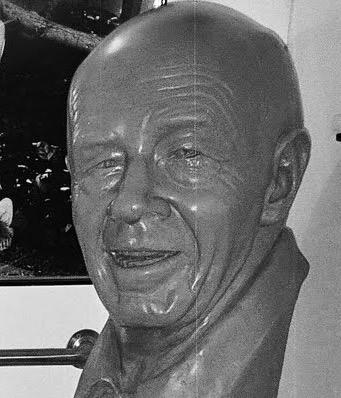Located off Highway 1 in Big Sur, the Henry Miller Library has a nice vibe. It's a little wooden shack of a bookstore, converted from the house of Miller's best friend, Emil White, after Miller's 1980 death. You can purchase Miller's controversial books of the 1930s onward there, as well as those by outsider authors such as Richard Wright, Anthony Burgess and AnaÏs Nin. In the exposed courtyard, you can witness the decay, à la Noah Purifoy's Joshua Tree museum, of an old organ and various weathered totems with pagan, Xtian and capitalist iconography. The Library also hosts readings and performances.
But the Library's oddest achievement is its bathroom. Aware of Miller's penchant for scatology, Emil White or his successors chose to place several images of the "Tropic of Cancer" novelist within the small chamber, including a 2-foot grinning bust immediately adjacent to the toilet.
Neither the sculpture nor any of the photographs looks directly at the toilet; each has been placed so that Miller can just view the porcelain out of the corner of his eye, the way a man can sneak a peek down the urinal trough at a sports event.
The decorator has subtly suggested, however, that homoerotic spying takes a backseat within Miller's field of interests: In the corner of the room has been placed a line drawing of an unclothed female crotch.
One wonders whether the liberal Mr. Miller would have found this decor hilarious. One also wonders what radical library performers such as Patti Smith ("Piss Factory") and Flea (sock on dick) -- both still featured in its advertisements -- thought of sharing their excretions with Henry. Curators gotta think about the legacy, even when the legator was a troublemaker.
Opening Doorz's copy of Miller's "Black Spring" at random: "Nearly always the French have chosen the right spot for their urinals. Off hand I think of one in Carcassonne which, if I chose the hour well, afforded me an incomparable view of the citadel; so well is it placed that, unless one be burdened and distraught, there must rise up again the same surging pride, the same wonder and awe, the same fierce attachment for this scene as was felt by the weary knight or monk when, pausing by the foot of the hill where now runs the stream that washed away the epidemic, he glanced up to rest his eyes on the grim, battle-stained turrets flung against a wind-swept sky."
Can't touch dat.

